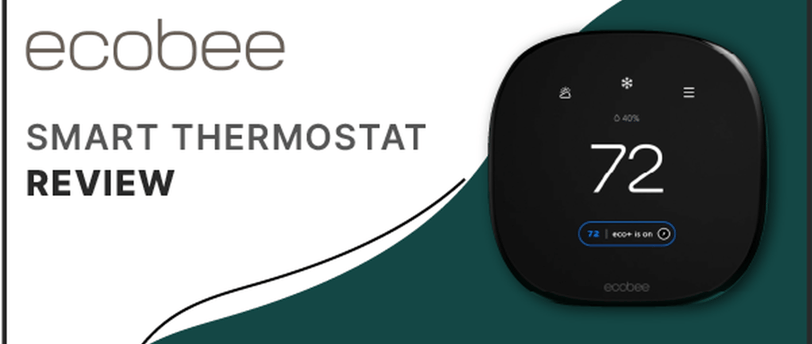How to Save Money on Your Energy Bills with Smart Thermostats


Understanding Smart Thermostats
Smart thermostats represent a significant advancement in the efficiency and functionality of temperature control devices, distinguishing themselves from traditional thermostats in several key ways. Primarily, smart thermostats utilize Wi-Fi connectivity, allowing users to control their home's heating and cooling systems remotely via smartphone applications or web interfaces. This feature enables homeowners to adjust settings while away, ensuring energy is not wasted on unnecessary heating or cooling.
Moreover, smart thermostats are equipped with advanced sensors that monitor various factors, including occupancy, outdoor temperature, and humidity levels. This data allows the device to make real-time adjustments, optimizing energy use based on actual conditions. In contrast, traditional thermostats typically rely solely on manual inputs, lacking the capacity to respond adaptively to environmental changes.
Another notable advantage of smart thermostats is their programmable features. Users can set schedules that align with their daily routines, which facilitates more energy-efficient operation during periods when the home is unoccupied. Some of these devices utilize learning algorithms that analyze user behavior over time, adapting the heating and cooling schedules automatically to improve energy savings further. This learning capability enhances convenience, as occupants no longer have to remember to adjust the thermostat manually each time they leave or return home.
In addition to these functionalities, smart thermostats may offer integration with other smart home systems, enhancing overall home automation. The convenience of remote temperature adjustments, combined with intelligent features, empowers users by providing greater control over their home environment. Consequently, smart thermostats not only promote comfort but also contribute to significant savings on energy bills through their innovative technology and design.
Benefits of Using Smart Thermostats for Energy Savings
Smart thermostats offer a multitude of benefits that significantly contribute to energy savings in both residential and commercial settings. One of the primary advantages is their ability to track energy consumption. By providing users with real-time data on energy usage, these devices empower homeowners to identify patterns and make informed decisions about their heating and cooling habits. This capability ultimately leads to reduced energy waste and heightened awareness of energy consumption.
Another notable benefit is the precise temperature control that smart thermostats facilitate. Unlike traditional thermostats, which may only offer basic temperature settings, smart models allow users to set specific temperatures for different times of the day or week. This level of control ensures that energy is not wasted on heating or cooling an empty home, as the thermostat can adjust accordingly when occupants are away or asleep. This targeted approach not only enhances comfort but also maximizes energy efficiency.
Moreover, smart thermostats optimize heating and cooling schedules based on user behavior and preferences. Many models use machine learning to analyze historical data and automatically adjust settings for optimal performance. This self-optimizing feature means systems run more efficiently, further lowering energy bills. Furthermore, smart thermostats seamlessly integrate with other smart home devices, creating a cohesive ecosystem that can streamline energy management. For instance, when linked to smart blinds or lighting systems, the thermostat can adjust its settings based on natural light levels, further conserving energy.
These features collectively enhance environmental sustainability by reducing greenhouse gas emissions associated with energy production. In the long run, the financial impact of implementing smart thermostats is substantial, making them not just a luxury, but a wise investment for anyone looking to save money on energy bills while contributing to eco-friendly practices.
How Smart Thermostats Work to Optimize Energy Use
Smart thermostats are advanced devices designed to manage and optimize heating and cooling systems, significantly reducing energy consumption and costs. The functionality of these devices is largely dependent on their capability to gather data through various sensors. These sensors monitor environmental conditions, including temperature, humidity, and occupancy levels within a home or office. By continuously gathering this data, a smart thermostat can accurately assess the current conditions and adjust the HVAC system accordingly.
One of the salient features of smart thermostats is their ability to analyze usage patterns over time. By learning how occupants interact with their heating and cooling systems, these devices create a profile of habits and preferences. For instance, if a home typically experiences lower occupancy during the day, the thermostat can adjust the temperature settings automatically during these hours, thus conserving energy without sacrificing comfort. This leads to more efficient energy use as the system operates only when necessary.
Moreover, smart thermostats utilize sophisticated learning algorithms that enable them to predict user behavior and fine-tune energy-saving strategies. These algorithms analyze historical data to determine when to preheat or cool a space, ensuring optimal temperatures are reached by the time occupants return home. This predictive capability not only enhances comfort levels but also leads to significant energy savings over time.
In addition to manual controls via smartphone apps or voice commands, smart thermostats often incorporate geofencing technology. This allows them to make real-time adjustments based on the location of occupants, further optimizing energy efficiency. Collectively, these features make smart thermostats a valuable tool for those looking to minimize their energy usage while maintaining a comfortable living environment.
Installation Services for Smart Thermostats
Installing a smart thermostat is a critical step in optimizing your home's energy management. While some homeowners may consider a DIY approach, the importance of professional installation services cannot be understated. A qualified technician not only ensures that the thermostat is set up correctly but also customizes it to your specific heating and cooling systems. This tailored approach helps in maximizing the thermostat’s functionality, enabling seamless integration with existing home automation systems.
The installation process typically begins with an assessment of the home’s HVAC system. A professional will evaluate your current setup, identify the existing wiring, and select a compatible smart thermostat model. This step is crucial as not all smart thermostats are compatible with every HVAC system. Once the right model is chosen, the technician will remove the old thermostat, carefully label the wires, and install the new device, ensuring that all connections are secure. A common challenge in this process can involve outdated wiring or unexpected configurations, which a seasoned installer can navigate efficiently.
Moreover, utilizing professional services has several benefits. An experienced technician can optimize the thermostat settings to align with your lifestyle and energy consumption patterns, enhancing comfort and efficiency. Post-installation, they often provide guidance on using the device's features, such as scheduling and remote control capabilities, ensuring you can make the most of your investment. Additionally, hiring a professional minimizes the risk of installation errors that could lead to system malfunctions, saving you potential repair costs in the future.
Choosing the right smart thermostat model and relying on professional installation services can significantly improve your home's energy efficiency and comfort. This integrated approach ultimately leads to substantial savings on energy bills, representing a wise long-term investment. Following installation, maintaining clear communication with your technician ensures the device remains effective and continues to meet your home's evolving needs.
